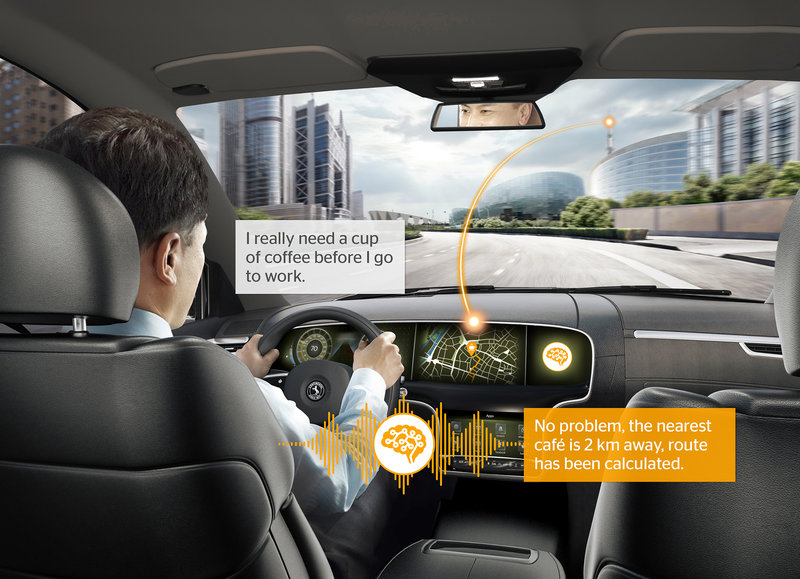How often do you think about the chassis on your car? How about tire grip? Or how fast an ambulance could be called in case of an accident? These questions drive automotive supplier Continental. They’ve been pioneers for mobility solutions since 1871, and their innovations in automated driving, connectivity, tires, and electrification have made them a multi-billion dollar employer of more than 244,000 people in 60 countries.
Staying at the forefront of automotive advances means everything Continental produces is tied to solutions and components for safety, human-machine interaction, connectivity, or the powertrain. The know-how and technology these products are based on is becoming more digital—and software has become an essential part of every new vehicle. Today, modern cars use over 100 million lines of code, and this number is on the rise.
“The automotive industry is going through the biggest transformation in its 130 year history,” Software Architect Timm Drevensek said. “Agility and collaboration across continents and projects are becoming ever more important requirements in our R&D.”

Additionally, historically separated domains and products are being bundled together on high performance computing based systems, considerably increasing size and complexity of solutions. This evolution is happening especially rapidly inside vehicles, where safety-relevant instrumentation is being integrated with open infotainment systems for navigation, radio, and connected services on the so-called Integrated Interior Platform (IIP). To adapt to this new reality, Continental had to evolve its process towards agile collaboration, a model better suited to this new complexity.
Traditionally developers for infotainment and instrumentation operated in disparate control systems which divided them into silos, shared Drevensek. Migration from a previously used proprietary version control solution to Git increased the overall development performance and enabled continuous integration. Unfortunately, the open source solution initially selected didn’t provide the required system stability within scaled teams, and the overall performance suffered again. So Continental started using a Git system and within six months it was helping developers work faster and more effectively with less support.
“In two weeks, we switched our projects to Git,” Drevensek said. “Team leads saw that we could integrate all of our existing tools and release two to three times per day—up from two to three times per week. The speed and performance of the team increased dramatically.’”

Introducing GitHub in the DevOps portfolio propelled Continental toward positive change, in particular, by providing a stable platform for teams around the world who want to innersource, reuse code, and break down silos. GitHub’s API, search functionalities, and code review system were especially helpful.
“It was a fortunate coincidence that innersource activities started at roughly the same time our corporate IT was introducing GitHub Enterprise to the company,” said Innersource Project Manager Zsuzsanna Gnandt. “It allows us to synchronize with the open source activities recently started at Continental and hosted on Continental’s GitHub organization.”
Since the auto industry is held to strict safety standards, Continental also has to keep their development processes accessible and any changes or updates in customer requirements have to be made quickly and across the board. With GitHub, they created an automated pipeline integrating tools like Jira and Grafana to verify all software changes with pull requests and keep detailed records. Continental also uses third-party integrations to make their DevOps ecosystem as secure and comprehensive as possible—including Prometheus for monitoring, Elasticsearch for logging data, Jira for issue-tracking, Confluence for documentation, Artifactory for binary storage, Kubernetes for build infrastructure, and more. This ecosystem of industry standard tools combined into a workflow is forming a new set of Continental DevOps Products.
“To make a change across systems, any developer can open a pull request,” Drevensek said. “Jenkins—our continuous integration system—ensures that every pull request is verified and meets our standards. This gives developers more freedom and autonomy and makes their lives easier. They don’t have to call someone asking to integrate the code. We have established a traceable integration system that is fully automated and easy to use.”
With innersource, we want to enable all developers with the freedom to be creative, to drive innovation without barriers, and to be appreciated for their contributions across the company.
The freedom to contribute to projects across the organization makes it possible for Continental developers to borrow best practices from existing open source communities to build their internal software. Gnandt feels this way of working is crucial to helping the company stay agile as it grows. “Developers can create a project by themselves,” Gnandt said. “If they have a project they want to build and take part in, they can bring it to Continental’s innersource world.’”
Gnandt’s team was among the first to use GitHub. She feels lucky, because it proved to be the right code sharing platform in many ways—from reviewing code to managing infrastructures and even attracting new users who were not yet familiar with GitHub. An open source community like GitHub attracts people who are motivated to share and reuse code, Gnandt said. Implementing GitHub in the company is a bonus for motivated young developers and furthers its goal to be as attractive and progressive an employer as possible. “With innersource, we want to enable all developers with the freedom to be creative, to drive innovation without barriers, and to be appreciated for their contributions across the company.”
Without a DevOps setup, it could take two weeks of manual work to get a new developer up and running. Using tools like Ansible and Vagrant by following a GitOps philosophy with GitHub as a central configuration storage reduced that timeframe to just 10 minutes—even for a distributed workforce. “It brings us closer to people from the other side of the world,” Drevensek said. “You can contact someone you’ve never seen before who’s found and used your project. Sometimes they even create a pull request to improve and add onto the work you’ve already done.”

Even though Continental developers have now come a long way with GitHub since Drevensek’s introduction, they still need support from time to time. And with GitHub Support they always feel like their concerns are a priority. “You don’t feel that your request is stuck in an email inbox,” Drevensek said. “There’s somebody who understands on the other side. You don’t have to get passed to three different people to get the right answer.”
The future of Continental is driven by the software solutions they produce. One of the key company goals is “to generate growth for system solutions with our pioneering software.” GitHub, paired with state-of-the-art tooling, is essential to providing the perfect environment and reaching this goal.
For Drevensek, embracing change is essential to improving Continental’s products. “Change might be challenging sometimes, but being a part of that change and shaping it is exciting.”



